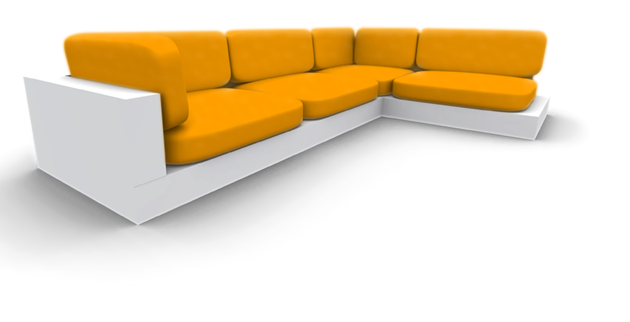| Autor | Beitrag | ||||
|---|---|---|---|---|---|
|
barty Hält's aus hier Beiträge: 10 |
Servus
hoffe bin im richtigen bereich gelandet. wie kann ich, wenn ich einen bildausschnit von 10x10 pixel habe, diesen auf dem desktop suchen lassen und mit der maus zu den koordinaten springen. schon mal danke für eventuelle hilfen |
||||
BenBE       
Beiträge: 8721 Erhaltene Danke: 191 Win95, Win98SE, Win2K, WinXP D1S, D3S, D4S, D5E, D6E, D7E, D9PE, D10E, D12P, DXEP, L0.9\FPC2.0 |
Such mal nach dem Stichwort KreuzkorellationIst dfür zwar (wegen O(n^3) nicht unbedingt das Schnellste, aber sollte für einfache Dinge reichen.
_________________ Anyone who is capable of being elected president should on no account be allowed to do the job.
Ich code EdgeMonkey - In dubio pro Setting. |
||||
delfiphan       
Beiträge: 2684 Erhaltene Danke: 32 |
Nicht, dass ich das empfehle aber effizient lässt es sich mit Faltung via Fourier Transformation erledigen. Dann wäre die Komplexität n^2 log n.
In Pseudo-Mathe irgend sowas wie: MaxInd(Kreuzkorr(Bildschirm, Ausschnitt)) = MaxInd(Faltung(-Bildschirm, Ausschnitt)) = MaxInd(Fourier^-1(Fourier(-Bildschirm)*Fourier(Ausschnitt)))) Wobei MaxInd die Indizes (Koordinaten) am Maximum zurückgibt. Die Multiplikation versteht sich Komponentenweise im Frequenzraum (n^2). Bei so kleinen Fensterchen (10x10) lohnt es sich vermutlich aber eher nicht. |
||||
Xion       
 Beiträge: 1952 Erhaltene Danke: 128 Windows XP Delphi (2005, SmartInspect), SQL, Lua, Java (Eclipse), C++ (Visual Studio 2010, Qt Creator), Python (Blender), Prolog (SWIProlog), Haskell (ghci) |
Bin ich blöd? Du kannst doch einfach die Pixel alle einmal angucken (maximal). Damit wäre es O(n)...oder was ist bei dir n? Das wäre jetzt auch meine Lösung, da sie einfach ist. Guck dir die Pixel die Reihe nach an. Ist der betrachtete Pixel = Pixel 0/0 in deinem Fenster, guck ob die Pixel ausenrum dein Fenster matchen. _________________ a broken heart is like a broken window - it'll never heal In einem gut regierten Land ist Armut eine Schande, in einem schlecht regierten Reichtum. (Konfuzius) |
||||
elundril       
Beiträge: 3747 Erhaltene Danke: 123 Windows Vista, Ubuntu Delphi 7 PE "Codename: Aurora", Eclipse Ganymede |
ich hätt ne andere frage: wenn man 2 bilder hat, müssten ja zwei variablen da sein, oder? also zb (m*n)^3 oder so? weil zb bei Boyer-Moore oder KMP hat man ja auch 2 variablen. n für das suchwort und m für den text in dem gesucht werden soll. oder irre ich?
lg elundril _________________ This Signature-Space is intentionally left blank.
Bei Beschwerden, bitte den Beschwerdebutton (gekennzeichnet mit PN) verwenden. |
||||
Gerd Kayser       
Beiträge: 632 Erhaltene Danke: 121 Win 7 32-bit Delphi 2006/XE |
Möchtest Du ein bestimmtes Icon auf dem Desktop suchen und anspringen? |
||||
BenBE       
Beiträge: 8721 Erhaltene Danke: 191 Win95, Win98SE, Win2K, WinXP D1S, D3S, D4S, D5E, D6E, D7E, D9PE, D10E, D12P, DXEP, L0.9\FPC2.0 |
Naja, eigentlich sind es 4: Zwei Variablen je Bild, also jeweils Höhe und Breite.
Komplexität ganz naiv wäre dann: (w1-w2+1)*(h1-h2+1)*(w2)*(h2) Für w1=h1 und w2=h2 ergibt sich daraus: (w1-w2+1)^2*(w2)^2 Sprich ganz naiv wäre man bei n^4 (ausmultipliziert); da es aber wie gesagt über die FFT bzw. ne Faltung nen Shortcut gibt, ist O(n^3) durchaus eine verwertbare obere Schranke. Habe ja auch nur behauptet, DASS es in O(n^3) geht, NICHT, dass es O(n^3) braucht _________________ Anyone who is capable of being elected president should on no account be allowed to do the job.
Ich code EdgeMonkey - In dubio pro Setting. |
||||
Martok       
Beiträge: 3661 Erhaltene Danke: 604 Win 8.1, Win 10 x64 Pascal: Lazarus Snapshot, Delphi 7,2007; PHP, JS: WebStorm |
Jup, und genau das Ergibt dann die Rechnung von Kann man noch etwas optimieren, indem man nicht jedes Pixel prüft, sondern über eine Art Quadtree mit Color-Lookup arbeitet. Aber wesentlich besser wirds tatsächlich nicht, solange man nur Pixel vergleicht. Muss aber auch nicht, mit ScanLine und InMemoryPixmaps solle man das wohl schnell genug hinbekommen, damit die Anforderungen erfüllt werden. Duct Tape Programming. _________________ "The phoenix's price isn't inevitable. It's not part of some deep balance built into the universe. It's just the parts of the game where you haven't figured out yet how to cheat." |
||||
Xion       
 Beiträge: 1952 Erhaltene Danke: 128 Windows XP Delphi (2005, SmartInspect), SQL, Lua, Java (Eclipse), C++ (Visual Studio 2010, Qt Creator), Python (Blender), Prolog (SWIProlog), Haskell (ghci) |
Ganz meine Meinung. Aber ich glaub "Duct Tape Programming" ist jetzt keine Auszeichnung hier an der Technischen Universität Naja, als Student vielleicht schon, pobody is nerfect _________________ a broken heart is like a broken window - it'll never heal In einem gut regierten Land ist Armut eine Schande, in einem schlecht regierten Reichtum. (Konfuzius) |
||||















